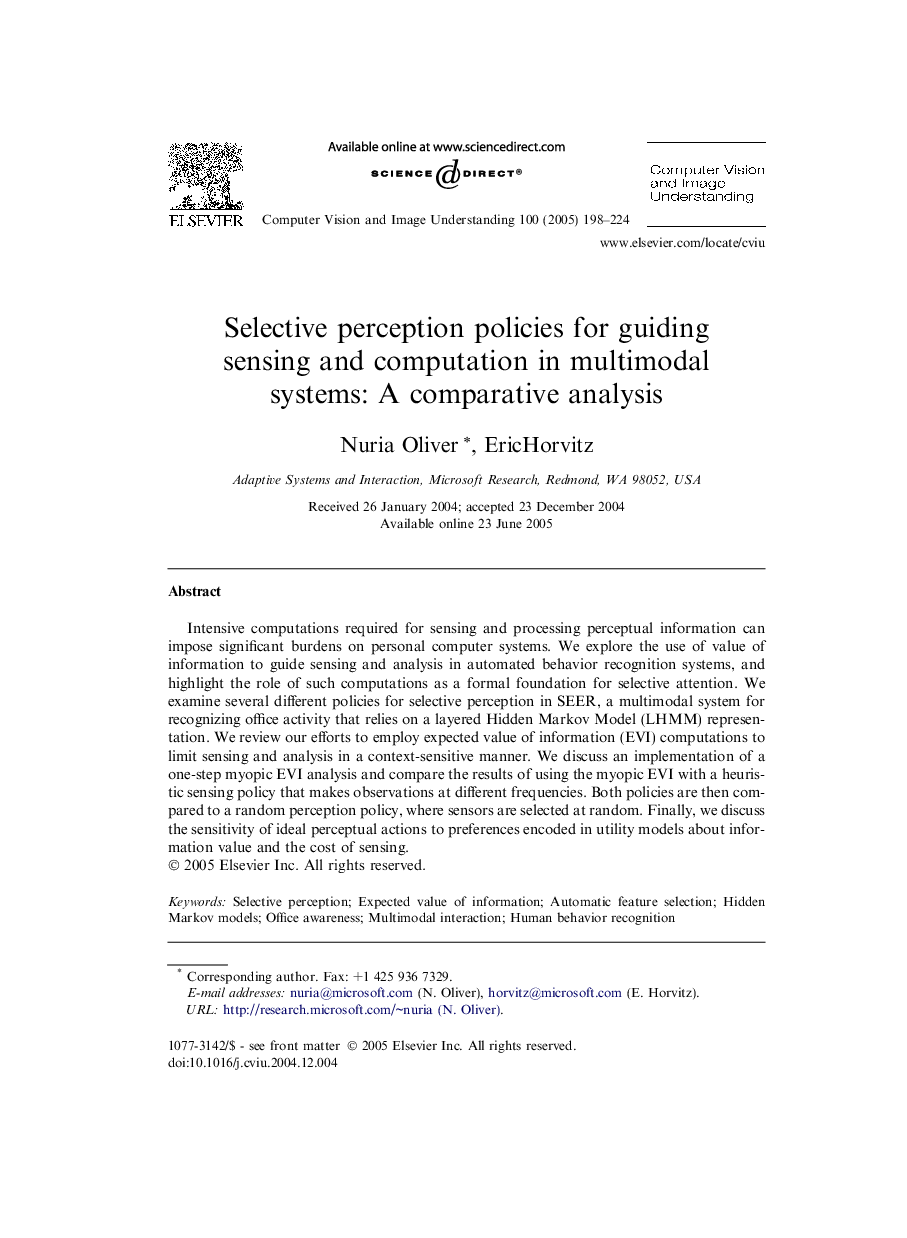| Article ID | Journal | Published Year | Pages | File Type |
|---|---|---|---|---|
| 9669564 | Computer Vision and Image Understanding | 2005 | 27 Pages |
Abstract
Intensive computations required for sensing and processing perceptual information can impose significant burdens on personal computer systems. We explore the use of value of information to guide sensing and analysis in automated behavior recognition systems, and highlight the role of such computations as a formal foundation for selective attention. We examine several different policies for selective perception in SEER, a multimodal system for recognizing office activity that relies on a layered Hidden Markov Model (LHMM) representation. We review our efforts to employ expected value of information (EVI) computations to limit sensing and analysis in a context-sensitive manner. We discuss an implementation of a one-step myopic EVI analysis and compare the results of using the myopic EVI with a heuristic sensing policy that makes observations at different frequencies. Both policies are then compared to a random perception policy, where sensors are selected at random. Finally, we discuss the sensitivity of ideal perceptual actions to preferences encoded in utility models about information value and the cost of sensing.
Keywords
Related Topics
Physical Sciences and Engineering
Computer Science
Computer Vision and Pattern Recognition
Authors
Nuria Oliver, Eric Horvitz,
